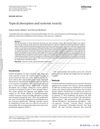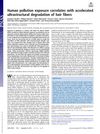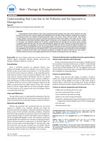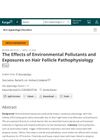Non-Invasive Biomonitoring of Infant Exposure to Environmental Organic Pollutants in North-Western Spain Based on Hair Analysis: Identification of Potential Sources
December 2023
in “
Environmental pollution
”
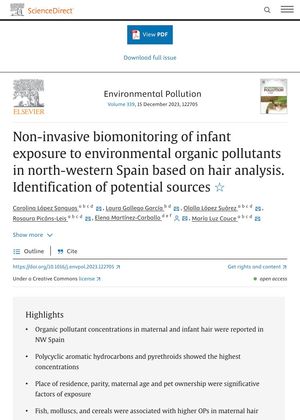
TLDR Hair analysis shows infants and mothers in north-western Spain are exposed to environmental pollutants, with factors like diet and residence affecting pollutant levels.
A study conducted in Santiago de Compostela, Spain, analyzed 110 hair samples from a group of 60 mothers and 50 infants to detect environmental organic pollutants (OPs). The pollutants found at the highest levels were polycyclic aromatic hydrocarbons (PAHs) and pyrethroids (PYRs), followed by organochlorine pesticides (OCPs), polychlorinated biphenyls (PCBs), organophosphorus pesticides (OPPs), and polybrominated diphenyl ethers (PBDEs). Factors such as place of residence, parity, maternal age, pet ownership, and dietary habits like consumption of fish, molluscs, and cereal were associated with higher OP levels. The study also found correlations between certain OPs in maternal hair and those in infant hair, indicating common sources of exposure. The presence of these pollutants in hair samples could indicate improper use of these products at home due to inadequate labeling. The study concluded that biomonitoring of infant exposure to environmental organic pollutants based on hair analysis can provide valuable information about potential sources of exposure.

